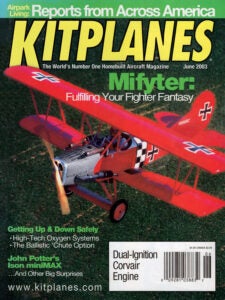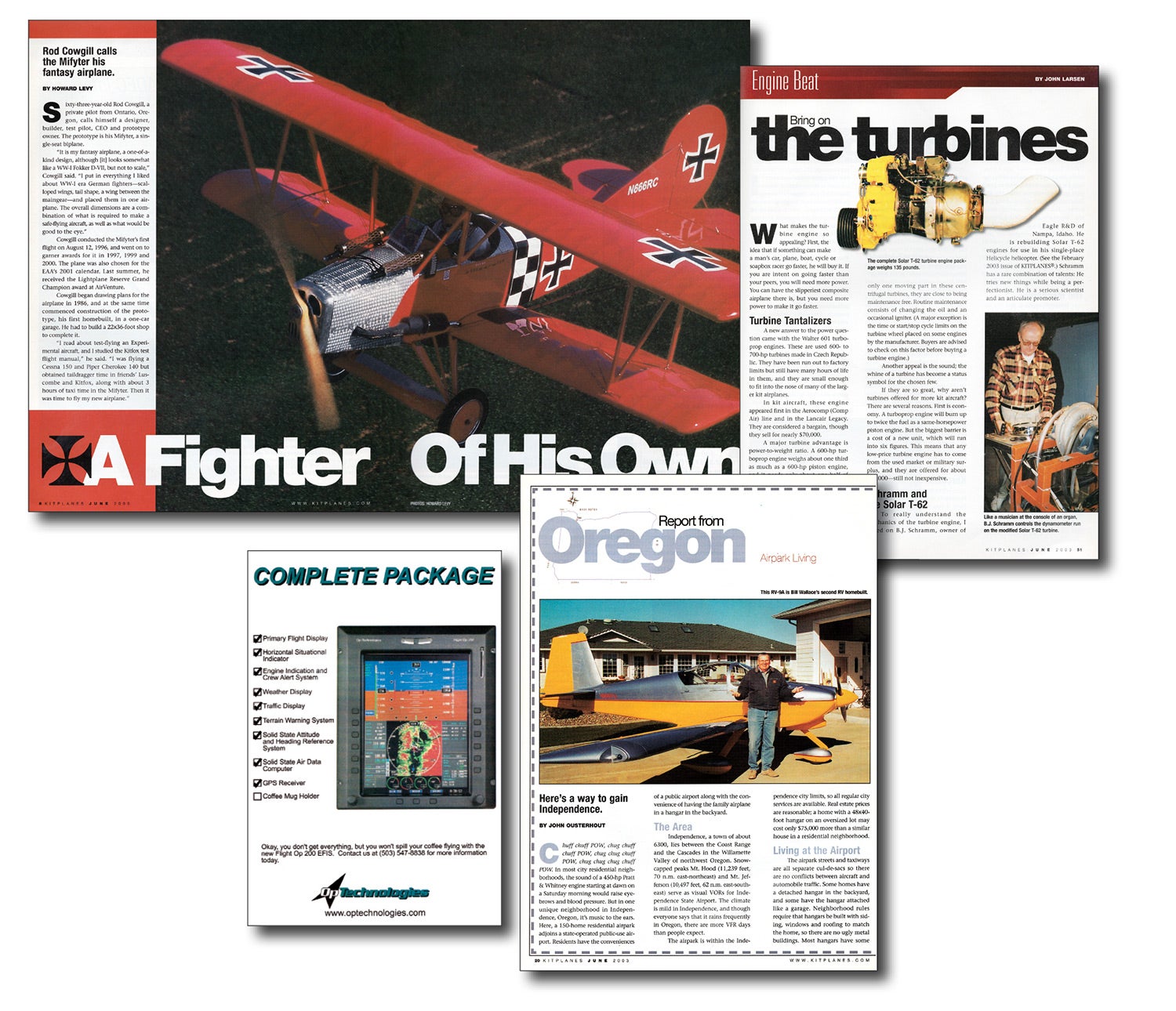
We’ve seldom shied away from indulging a builder’s whimsy on our pages, including the cover. So to find Rod Cowgill’s Mifyter on our June 2003 cover really isn’t much of a surprise. The single-seat biplane was a “fantasy airplane” for Oregonian Cowgill. “I put everything I liked about WW-I era German fighters—scalloped wings, tail shape, a wing between the main gear—and placed them in one airplane. The overall dimensions are a combination of what is required to make a safe-flying aircraft, as well as what would be good to the eye,” he said.
The original Mifyter used an inverted, two-stroke Rotax but was designed to take engines from 50 to 70 hp. Cruise speed was listed as 75 mph. Describing the initial flight testing, Cowgill said that “the only change to the airplane…was to switch to Frise-type ailerons in place of the hinged Cessna type that I originally fitted. The airplane proved to be very easy to fly and land, with outstanding visibility.” The Mifyter eventually spawned a Mifyter II variant with a Geo Metro engine, but as far as we can tell only two have ever been built.

Elsewhere in this issue, John Ousterhout described the joys of living on an airpark. In particular, the airpark in Independence, Oregon, where the then-current editor of KITPLANES®, Dave Martin, would eventually live in retirement. “The airport began as a grass field during Oregon’s centennial celebration in 1959. The city of Independence bought the airstrip and later donated it to the state. The Oregon Aeronautics Division granted the housing development access to the airport in 1974, and the airpark began.” Ousterhout summed up Independence by saying that the airpark “has proved to be a practical way for aviation-minded people to live at an airport without the responsibility and cost of maintenance. For many pilots, living at an airport and keeping the plane in a backyard hangar is only a fantasy. But it’s a dream come true for 150 families in Independence.”
On the tech front, OP Technologies showed its vertical-format EFIS that had everything but the “coffee mug holder.” Blue Mountain Avionics announced that it had completed integration with the Aerosance FADEC (electronic engine controls). OP and Blue Mountain are gone, and Aerosance’s FADEC was purchased by Continental and quietly mothballed.
Our Engine Beat column was hopefully titled, “Bring on the Turbines.” Columnist John Larson took a quick look at some of the turbine powerplants we all thought would become a part of the homebuilt world in the next few years. These included the Walter 601, a Czech-built turbine that did fly in several Lancair IV Propjets. Also in the column was a discussion with B.J. Schramm, who had been developing the Solar T-62 turbine for the Helicycle. A repurposed auxiliary power unit, the Solar had been modified by Schramm for rotary-wing use and was said to cost less than $12,000. He was honest about the main weakness of small turbines: fuel consumption. He noted that the T-62 used around 1.2 pounds of fuel per horsepower per hour. A conventional Lycoming at takeoff burns around half a pound per horsepower, and can get down to about 0.42 pph/hp. (Among spark-ignition aircraft engines, the big Continental IO-550 is among the best, getting down to about 0.39 pph/hp lean of peak EGT.) Turbine technology doesn’t scale downward well, and that as much as anything probably explains why we’re still waiting for an affordable, fuel-efficient turbine for homebuilts.













